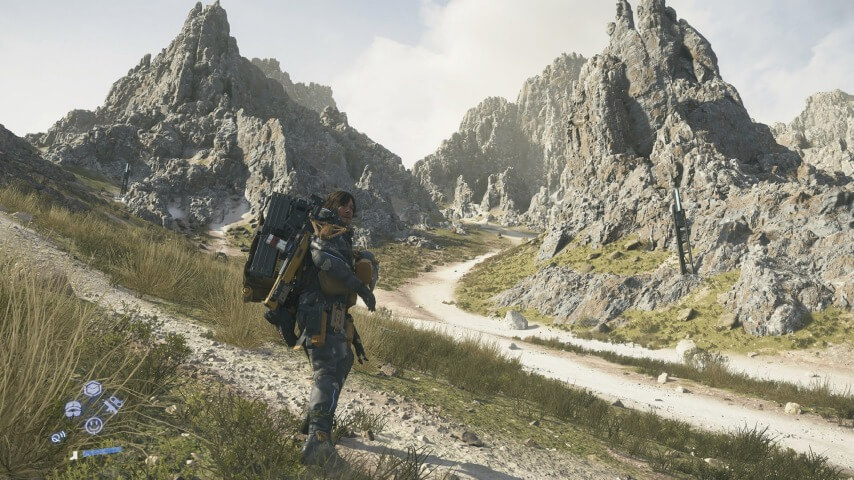Every Friday, A.V. Club staffers kick off the weekend by exploring the gaming world, delving into the concepts that underpin our favorite hobby with a touch of Game Theory. We’ll express our thoughts above and encourage you to share your weekend gaming experiences in the comments, along with any theories you have brewing.
The Overrated Nature of Subtlety in Gaming
As I toss my diminutive, sentient ventriloquist dummy—voiced by TV’s Jesus Christ—into the air to scout a band of armed foes I plan to stealthily defeat using heavy rubber pizzas, I can’t help but wonder: Is subtlety in video games overhyped?
Immersive Experience with Death Stranding 2
This reflection comes after spending around 50 hours with Kojima Productions’ Death Stranding 2: On The Beach. (Just to clarify, this is not a review. I’m close to finishing it, though not in a way that allows me to fully address all the intricate elements hidden in this expansive sandbox.) I often remind myself of the massive team behind this game, who have contributed to refining its core elements, which mainly revolve around Sad Norman Reedus delivering packages in a perilous Australia. Yet, it’s challenging, especially considering Hideo Kojima, the game’s director, often embodies the myth of the auteur in gaming.)
Kojima’s Unique Choices in Character Casting
Take, for example, how Death Stranding continues its trend of casting renowned directors as physical models (though not voices) for key characters. Nicolas Winding Refn and Guillermo Del Toro return from the first game, now accompanied by George Miller as a sea captain and Fatih Akin, who physically portrays the dummy I mentioned. Does this peculiar casting signify anything in Death Stranding 2’s narrative of connection and grief? Or is it merely Kojima’s way of networking? I’m uncertain if he could even articulate the reasoning himself; it feels like an instinctive choice elevated by a generous budget.
Charm Amidst Chaos
Despite some confounding aspects, I find myself captivated by much of it. The sheer oddity and the “let’s see what sticks” attitude provide an invigorating experience. During my first encounter with giant tar monsters, paired with a nostalgic Godzilla-style soundtrack, I couldn’t help but laugh. It’s inherently intriguing that a game allows a barefoot character with time-manipulating abilities to battle a robot Joker strumming a guitar on a sci-fi flamethrower.
Craftsmanship Falling Short
However, this whimsical approach clashes with Kojima’s flaws as a writer. The repetitive scripts in Death Stranding 2 could express ideas more succinctly. “Throw it in” works spectacularly in gameplay but falters in dialogue, where the narrative sometimes gets lost in excessive detail. While I feel a range of emotions while playing, often due to the evident acting talent, the lack of nuanced writing detracts from the overall narrative effectiveness.
Continuing the Journey
This isn’t a review—just some reflections after indulging in this vast and quirky title. I plan to continue Death Stranding 2 to discover how its storyline unfolds. I might critique the storytelling method, but the overarching tale of the living being pursued by the dead is genuinely fascinating. The gameplay itself offers a thrilling challenge, from constructing zipline networks to navigating treacherous terrains. Ultimately, I’m eager to uncover the quirky surprises still in store—what imaginative and unsubtle ideas will the game present next?
The Balance of Fun and Artistry
Death Stranding 2 certainly suffers from a lack of restraint that impacts its artistic integrity; yet, this very quality adds to the enjoyment, making it one of the most engaging games I’ve delved into this year.



